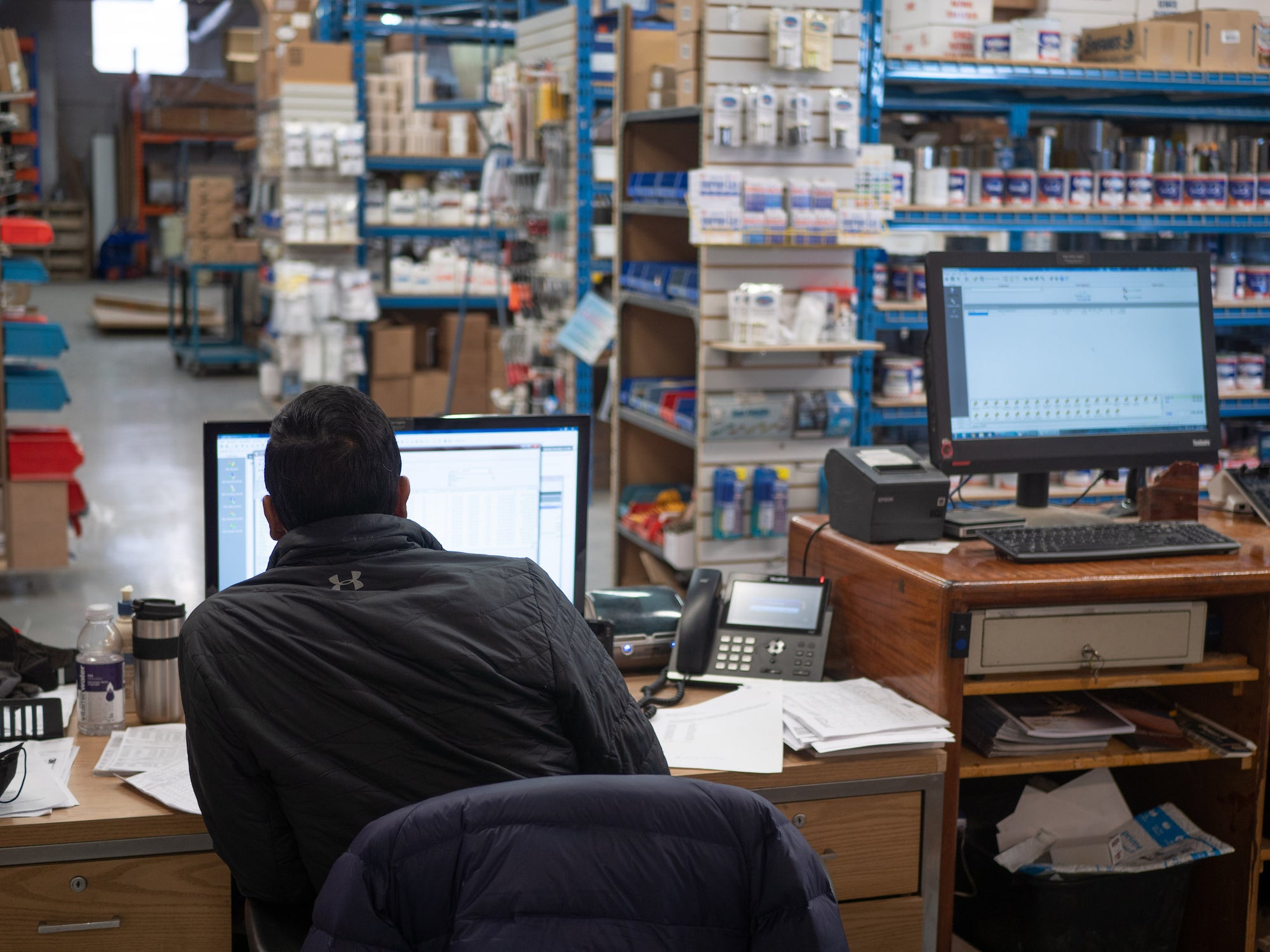INSTRUCTIONS FOR USING OUR CANVAS FILLER
Preparation
- Lay out newspapers or a large tarp sheet in your work area. DO NOT work in direct sunlight.
- Set canvassed canoe upside down on sawhorses (If possible, trim canvas 3” long all along gunwale line; this overhang will catch excess filler and prevent brush strokes from messing your inwale.)
- Cut the bristles on several old brushes (3”-4” wide) so that they are 1 ½” – 2” long; the shorter stiffer bristles help imbed the filler into the canvas.
- Stir the filler with a paint agitator on an electric drill.
MIX UNTIL YOU HAVE A CREAMY SMOOTH LIQUID (about 4 minutes will do)
Application
- The FIRST COAT is literally pushed into the canvas. Use 1 or 2 hands to hold the brush upright and using a figure-of-eight motion, grind the filler into the canvas. We cover about a 1 square area at a time.
- Brush out any runs or edges which form.
- Be certain to cover over the staples (or tacks) you used to attach your canvas to the canoe hull.
- Be sure to get the filler between the overlaps at the ends of the canoe.
- The SECOND COAT is applied right after the first coat. It is painted on and you are to ensure this is an evenly applied coat. This coat builds up materials which can later be lightly sanded without cutting the canvas. ALLOW 1 HOUR TO PASS WHILE THE FILLER SETS UP BEFORE YOU PROCEED WITH STEP 7.
- Clean up brushes in paint thinner so they can be reused.
- Use an old pair of rubber gloves or a pair of canvas mitts (from leftovers when you canvassed your canoe!) and spend 20 minutes rubbing the entire hull to ensure a smooth surface.
Curing
One day after application, the surface will feel dry but the linseed oil will not be cured. This takes ABOUT 30 days. If you are doing your work in warm weather, it is acceptable to leave the canoe outdoors, but only after it dried for 2 or more days. It is the warm, dry air which brings about a good “cure.”
The filler should be cured after 30 days in the dry air, or as long as 40 days in high humidity conditions.
To test, after the 30th day, use some fine sandpaper (120 or 150 grit) and sand several areas. If the paper plugs up – wait longer. If the material sands easily with a fine white powder resulting, then you are ready to proceed.
Finishing
- Sand the hull (by hand or with a vibrating sander) using fine grade sandpaper (120 or 150 grit). BE SURE to avoid overdoing the sanding and cutting the fibres of the woven canvas.
- At our shop, we trim the canvas just below the inner gunwales then attach the outwales and the optional keel and finally the brass stem bands.
- We clean the hull with a tack cloth then apply masking tape to the outer face of both outwales and to the end grains of the outwales.
- Paint the hull with a good bristle brush and a top quality yacht enamel. We suggest you apply a matching undercoat for the enamel and then 4 coats of the paint. IT IS IMPORTANT TO LET THE PAINT DRY FOR 8-10 DAYS BEOFRE GOING PADDLING. This is to allow the paint to harden properly; otherwise water may infiltrate the paint and cause blisters.
*****NOTE: If, when you are out paddling, the interior of your canoe gets wet. DO NOT dry out by exposing the painted surface to the sun – the heat will draw moisture through the filled canvas and may “blister” your paint!

